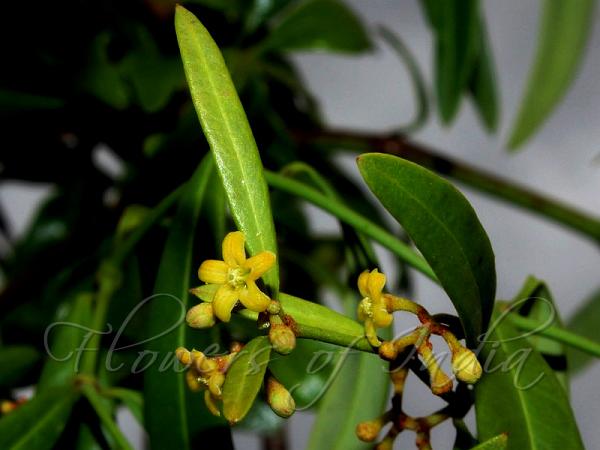|
| Emetic Secamone |
|

|

| File size | 119419 |
| Original date | 7/27/14 12:34 PM |
| Resolution | 800 x 600 |
| Flash | Flash fired |
| Focal length | 55.0mm |
| Exposure time | 1/160s |
| Aperture | 25.0 |
| Focus Distance | |
| Metering Mode | Multi-segment |
| Camera make | Canon |
| Camera model | Canon EOS 600D |
| Sensor type |
|
|
|
|
Photo: |
Botanical name: Secamone emetica Family: Apocynaceae (Oleander family)
Synonyms: Periploca emetica
Synonyms: Periploca emetica
Emetic Secamone is a climbing subshrub. Leaves are
4-5.5 x 1.5 cm, linear-elliptic, tip pointed, base narrowed into a
stalk, margins recurved, velvety beneath, lateral nerves indistinct.
Flowers are borne in cymes in leaf axils, trichotomously branched, on
peduncles 0.5 cm long stalks. Sepals are 0.5 mm, ovate, frilly, petals
twisted either to the left or right, 2 x 1 mm, oblong, ovate or pointed
at tip, corona staminal, of 5 scales; ovary 0.7 mm. Seed-pods are
paired, 7.5 x 0.8 cm, blunt at base and tapering at tip. Emetic
Secamone is native to Peninsular India.
Flowering: July-October.
Medicinal uses: The acrid root of Emetic
Secamone possesses emetic properties. The roots and leaves are also
used to cure diseases like leucorrhoea, fever, dysentery and headache.
The acrid root of Emetic
Secamone possesses emetic properties. The roots and leaves are also
used to cure diseases like leucorrhoea, fever, dysentery and headache.
Medicinal uses:
 The acrid root of Emetic
Secamone possesses emetic properties. The roots and leaves are also
used to cure diseases like leucorrhoea, fever, dysentery and headache.
The acrid root of Emetic
Secamone possesses emetic properties. The roots and leaves are also
used to cure diseases like leucorrhoea, fever, dysentery and headache.
| Identification credit: Santhosh Kumar, Santhan P, Anurag Sharma | Photographed at Taralu Estate, Bangalore. |
• Is this flower misidentified? If yes,